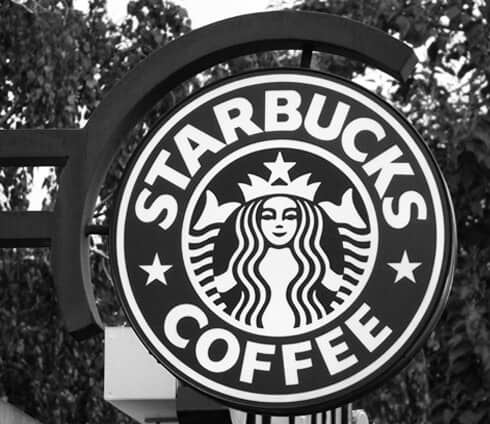Branding is certainly not a carefree topic. It is a critical element of any business. All too often logo design is treated as being interchangeable with branding. Although they go hand-in-hand, they are not the same. Many businesses overlook the true potential of what a brand can and will accomplish, settling for just a logo. So, what sets a brand apart from a logo. Why do you need a brand, not just a logo? Let’s explore the importance of branding and how to begin the process of developing a strong logo and brand.
SOME DEFINITIONS
In order to gain a healthy understanding of the differences between a logo and a brand, some definitions must first be established.
The progression is clear: a logo must come before a brand.
WHAT IS A LOGO?
As we’ve established, a logo is purely for identification. Logos derive their meaning from the product or service it symbolizes and therefore seek to identify, not explain or sell. A logo is not a strategy, but rather a company’s “avatar” in a way. Logos should be memorable, simple and timeless, leaving room for what the logo actually represents – you. Chaotic and complex logos distract from what is actually trying to be communicated.
An important counterpart of a company logo is its identity. A company’s logo and identity are inextricable. When talking about identity, we are talking about business cards, letterhead, marketing collateral, packaging, signage etc. Simply put: anything visual. Identity is the vehicle for a logo and, just like a logo, is purely for identification purposes.
TAKE A LOOK AT SOME GOOD LOGOS
So what makes a logo “good?” According to designer Jacob Cass, there are five characteristics that make an effective logo. It should be simple, memorable, versatile, appropriate and timeless. With no reference to the emotion these companies’ brands create, the following logos identify their product or service effectively. Chase (simple), Disney (memorable), Reebok (versatile), Tropicana (appropriate), Olympic Rings (timeless).
WHAT IS A BRAND?
A memorable logo is important; it paves the way for effective branding. However, a brand is more than a logo. It’s more than just visual identification. A brand is an emotion behind what someone feels, sees and tastes when they interact with your company on any level. Your brand is the image behind what your business believes and strives to accomplish. As a result, your brand becomes your personality and along with that personality comes numerous associations. Therefore a brand bears much more responsibility than a logo.
Brilliant branding takes courage because it is something that is constantly being formed by the public’s perception. Although a designer lays the foundation of a brand visually, the brand’s audience is what truly shapes it. Therefore, it is imperative that the foundation is laid correctly by falling in line with your business’ image and goals. Understanding how the market’s perception of your brand balances with your company’s goals leads to making informed branding decisions and is crucial to developing a brand that will endure and remain timeless.
Practically speaking, your brand should be ubiquitous, consistent and follow a strategy. Whereas a logo is portrayed for identification, a brand should be stewarded with much thought as to how your audience will respond to it. After all, branding is an emotional experience that people want to be a part of. Make it engaging.
TAKE A LOOK AT SOME GOOD BRANDING
Apple is known for their sleek, simplistic approach to all things technology-related. From their products to their stores to their keynote speeches, this brand image of simplicity is well communicated and well received.
Starbucks has established an internationally recognized brand for themselves by being more than just coffee. Their brand communicates a warm, inviting and eco-friendly attitude in their products and service.
Target is yet another brand that has effectively set themselves apart with their quirky and fun advertising, a powerfully consistent red and a fresh emphasis on being a place for the best deals.
Although the best logos are typically the best brands, it is possible to establish brilliant branding with a mediocre logo. Branding is much deeper than mere visual representation. However, use discretion; many logos are simply too unreliable and amateur to support an effective branding strategy.
SMALL BUSINESS BRANDING
Those three examples exhibit effective branding on a rather large scale, making it look effortless. For small businesses, however, branding doesn’t seem that easy. What does meaningful and effective branding look like on a small scale for a small business? It all comes down to creating a positive perception through clear, concise and consistent communication. Having lots of money doesn’t create a good brand. Having thousands of locations doesn’t make a good brand. An awesome logo doesn’t even make a good brand. Communication and a positive experience for your audience is what makes a good brand.
A longstanding client of fatrabbit, navitend, is a prime example of how a small business can have an effective brand within the community it serves. Driven by values of readiness, responsiveness and stewardship navitend wanted to make sure that their brand consistently communicated in this way. Through a bold and responsive orange, clean and straightforward imagery, a logo that speaks volumes of the desire to guide their clients, and a name that says it all, a clear brand is communicated.
WHAT NOW?
Want to make the switch from a logo to a brand? Want a more effective logo? By listening to your vision and values, we can help shape your brand and elevate your logo to portray your business more effectively. Contact us to get started or learn more about how we build brilliant brands for our clients.
This content was originally published here.


